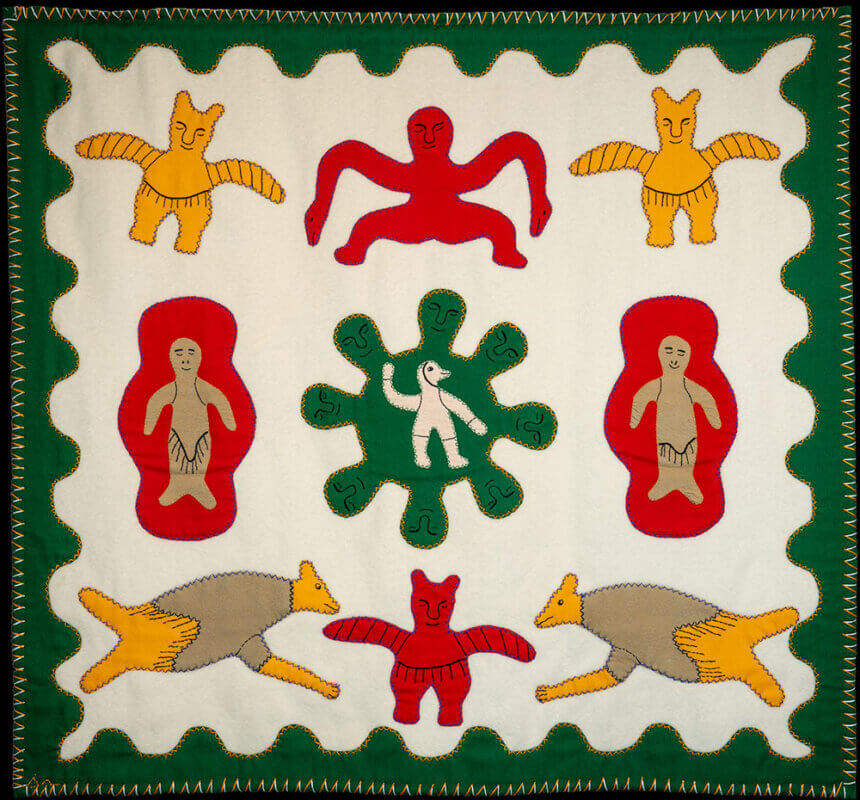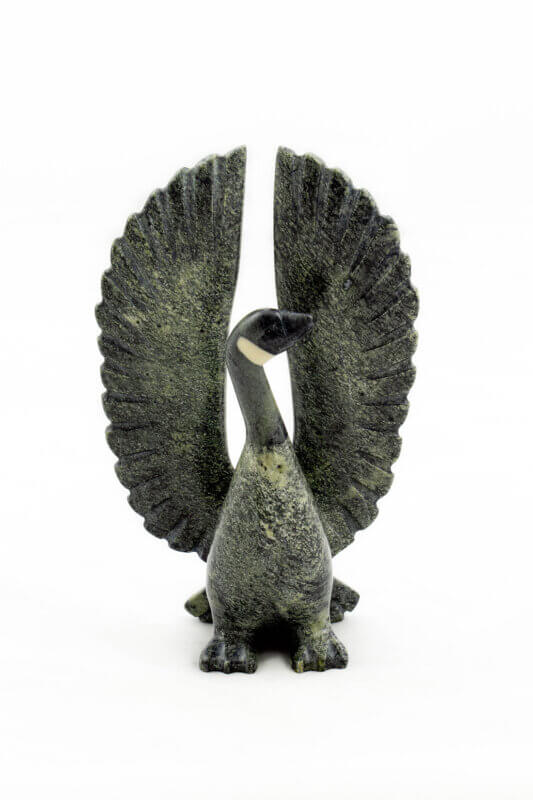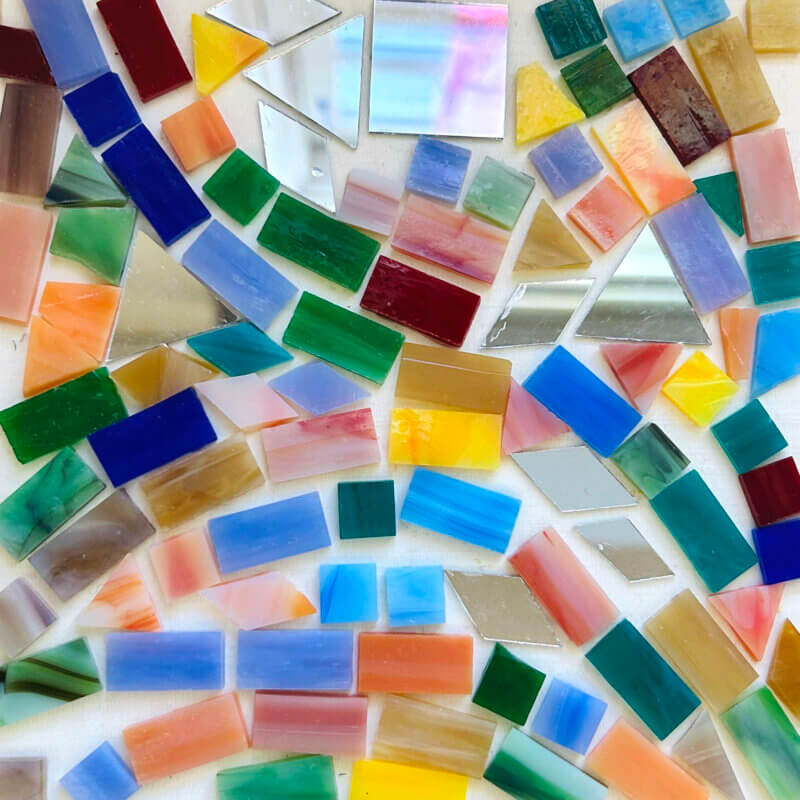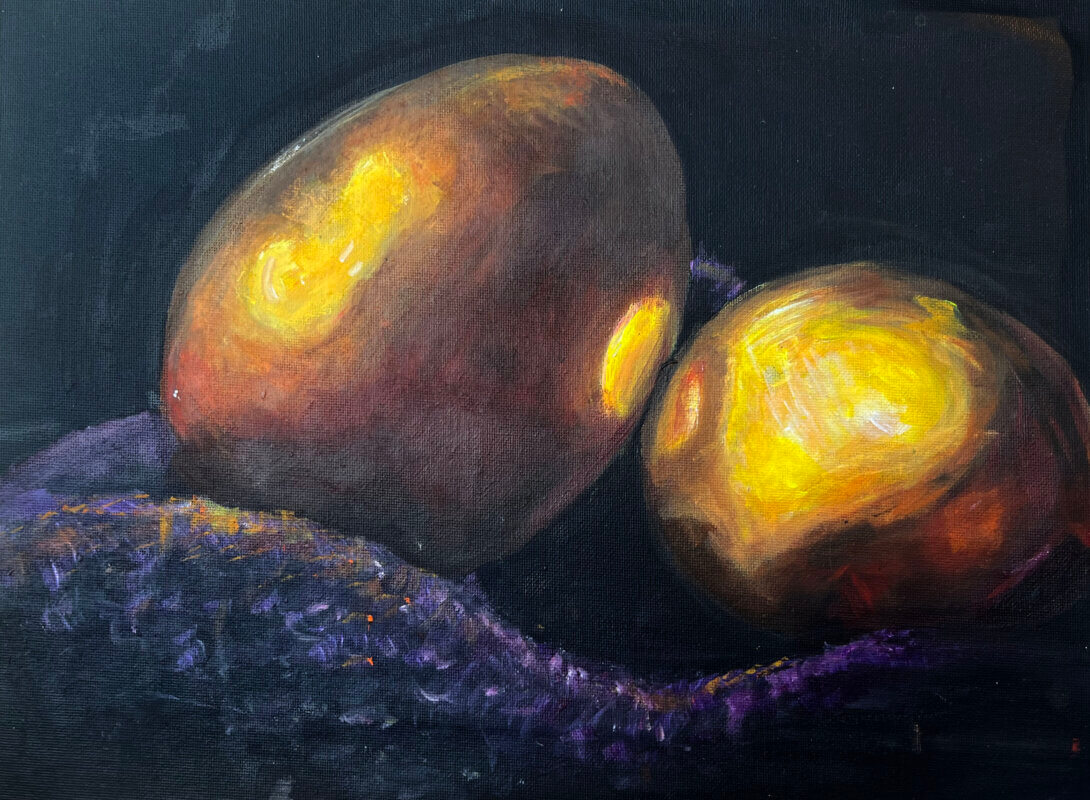Transformations: Wildlife in Inuit Art and Culture
October 21, 2023 - May 5, 2024
Exhibition open October 21, 2023 – May 5, 2024
This will be the first exhibit at the National Museum of Wildlife Art dedicated to Inuit art. “Inuit art typically includes wildlife as subject matter, which makes it a good fit for us, but this exhibit also considers transformations. Human-animal transformation is a topic depicted in many of the sculptures we have in our permanent collection, and this topic also relates to the changes that Inuit people themselves were going through in the mid-20th century,” says Curator of Art Tammi Hanawalt, PhD.
This exhibit highlights the work of Inuit artists who gained global recognition from the mid-20th century to the present day. Canadian artist and writer James Houston, who spent more than a decade living among the Inuit in the eastern Arctic, is credited with introducing print-making to the community and for establishing recognition of Inuit art. Houston organized the first major exhibition of Inuit artwork. The show, held in Montreal in the fall of 1949, was a complete sell-out and became an annual event with “lineups routinely stretching out the door and down the block,” according to the Canadian Museum of History. In the 1950s, the Canadian government sponsored tours of Inuit art through Eastern and Western Europe, South America, and the Middle East.
As the work of Inuit artists was being introduced to audiences around the world, Inuit lives in their traditional lands were being transformed—without them having much say in the matter. (Inuit only became eligible to vote in federal elections in 1950.) Their traditional subsistence living became more and more difficult due to government policies, environmental shifts, and the diminishing fur trade, which forced many of the people to move into settlements. Creating art was a way for Inuit to earn a living in this new reality, and, by the mid-20th century, a thriving artistic movement had developed.
Inuit artists were encouraged to depict cultural practices and rituals along with daily-life occurrences, and animals played a pivotal role. “There is an undeniable connection between Inuit people and Arctic wildlife,” Hanawalt says. Depictions of the human-animal connection and of ritualistic transformations became sought-after subject matter in Inuit carvings, prints, and textiles. By the mid-20th century, Inuit artists were recognized for their artistic merit: Drawer and printer Kenojuak Ashevak (1927–2013), one of the first women artists in Cape Dorset, is one of the best-known Inuit artists of the 20th century; carver Pauta Saila (1916–2009) became famous for his “dancing bears;” and recent artists such as Mayoreak Ashoona (b. 1946), a master carver, continue to create innovative artworks that include wildlife from the Arctic region of Nunavut.
Through cultural stories, Transformations seeks to explore Inuit history, values, and beliefs. The exhibit is comprised of works from the permanent collection and items on loan from private collections. Artists in the exhibit include Ashevak Alda (b. 1977), Emily Pangnerk Illuitok (1943–2012), and Napachie Pootoogook (1938–2002). “The hope, as it is with all exhibits, is that visitors take away a deeper appreciation of the artwork and perhaps are introduced to something that they did not know before,” Hanawalt says. “Most importantly, I want to bring attention to the fact that today Inuit artists are producing powerful artworks that reference histories and that, at the same time, confront contemporary issues such as conservation and environmental concerns.”
Can’t make it to the Museum in person? Explore the virtual tour:





- 1
- 2
- 3
State of the Art: Student Art Show in Honor of Marion Buchenroth
Through May 4, 2025This youth art exhibit is an annual collaboration between the National Museum of Wildlife Art and art educators from Teton County schools. The several hundred works of art on display beautifully demonstrate how students grow as artists as they move through grades K-12.
See the Exhibit- 1
- 2
- 3
Out of the Shadows: Prints from the Permanent Collection
Through April 27, 2025Dürer, Rembrandt, Goya, Picasso, Warhol—while many of the works in this show may be small in size, they are created by some of the biggest names in the canon of art history.
See the Exhibit




